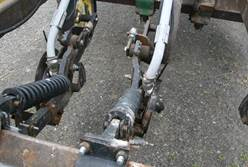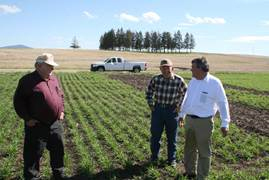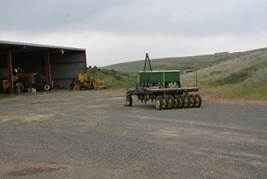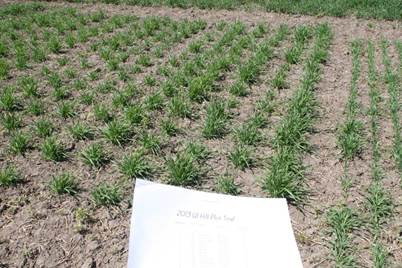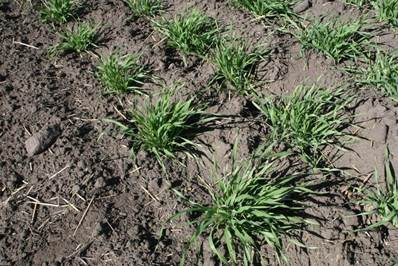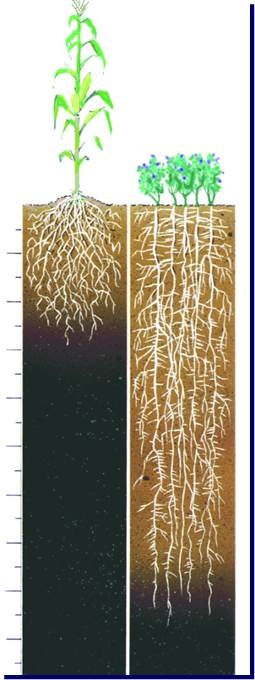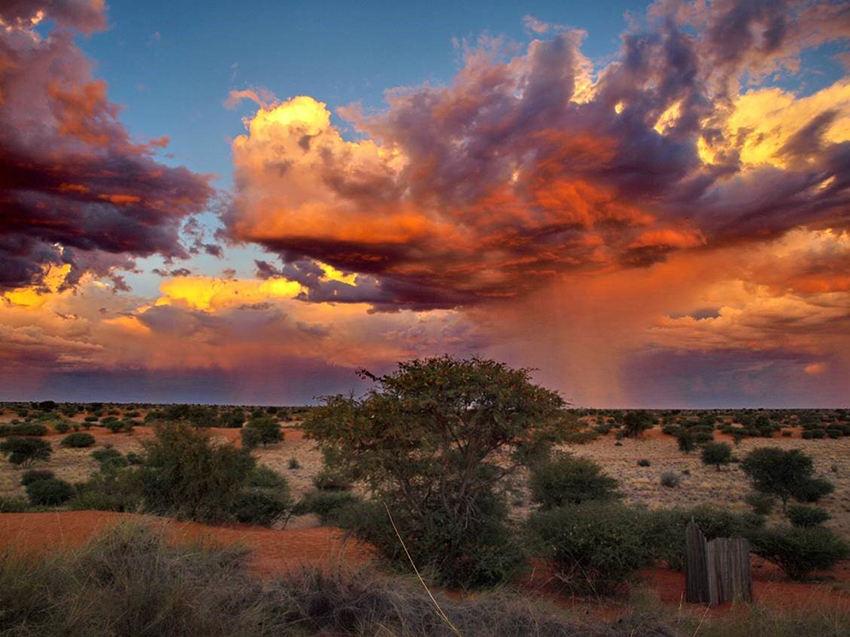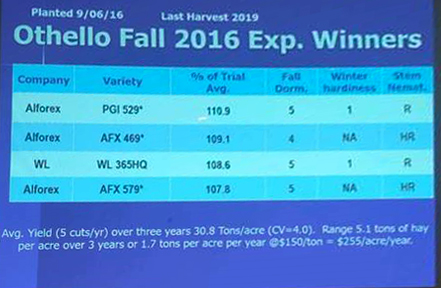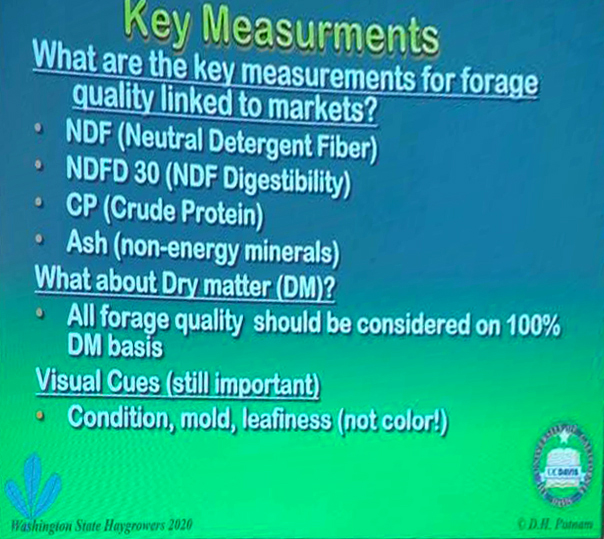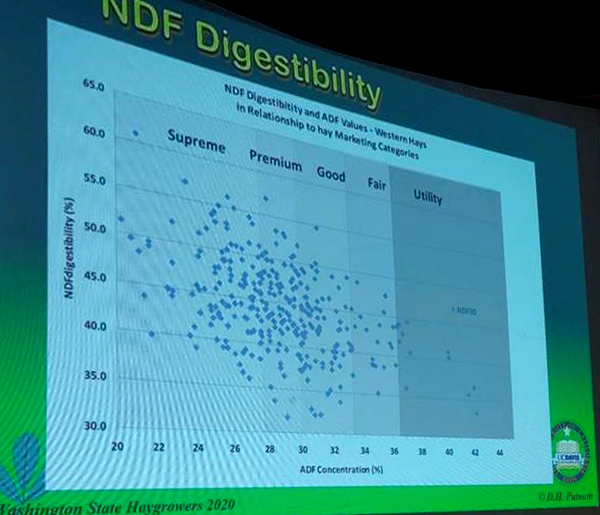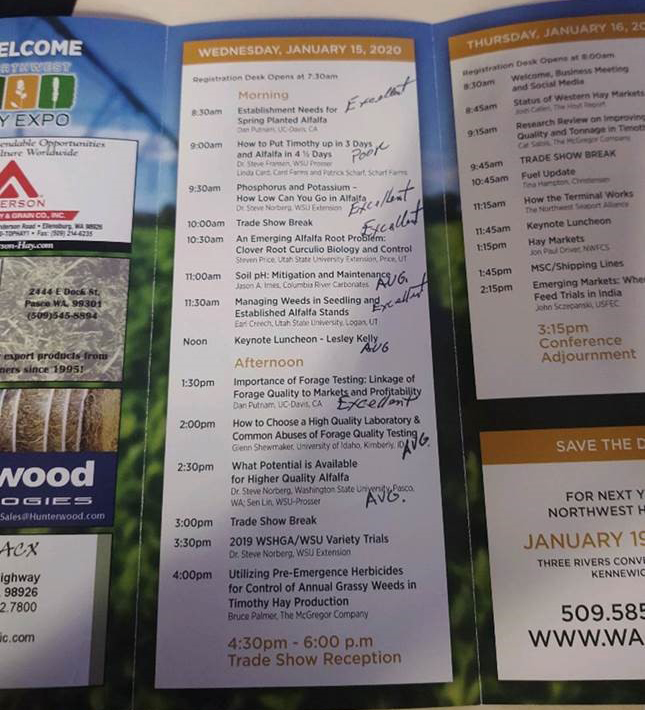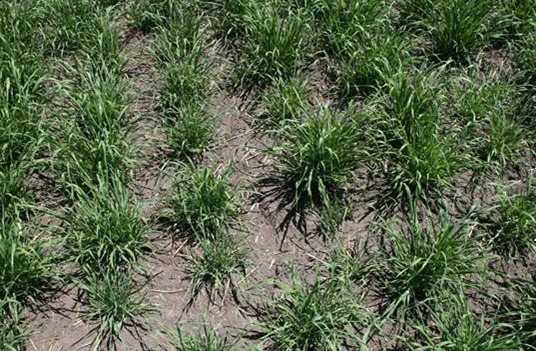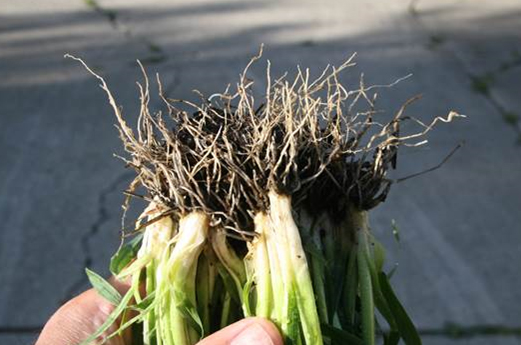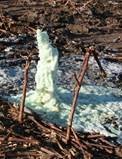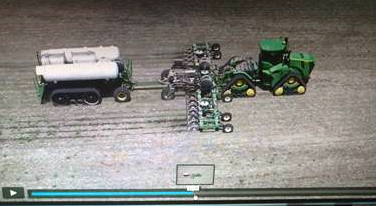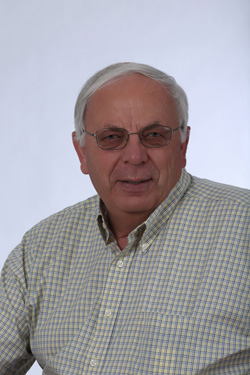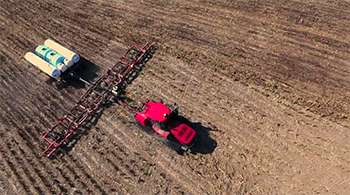|
Return To Main Page
Finally understood Alfalfa, Must Have Deep Roots to Compete. Alfalfa Production in California, Dan Putnam, UC, Davis, Professor, Speaker, Author, Alfalfa Production. https://ucanr.edu/blogs/blogcore/postdetail.cfm?postnum=17721 To raise dairy quality hay, Alfalfa should be raised on your best soils that allow roots to go deep. Alfalfa can also be raised on your worst or marginal soils, dryland soils…for less than premium hay grades…but applicable to your livestock needs. At Hugoton and further west….Dryland Alfalfa is expected to respond to fertilizer but may not be the best return for the investment….can you get $2.00 back for each $1.00 invested? Banding nutrients would be key in Dryland Alfalfa. “Natures Miner” Alfalfa roots can go to 49 feet. Wikipedia Says. The plant grows to a height of up to 3.3 ft, and has a deep root system, sometimes growing to a depth of more than 49 ft to reach groundwater. A desert crop, Alfalfa handles drought well in Africa and supports life and husbandry.
The crop Alfalfa can make a good economic return with limited water or supplemental irrigation.
Sandy Soils of the African Kalahari.
At 17 feet in depth this biological phenomenon seems like a lot roots in a high quality soil, but in the Palouse Loess Soils of the Pacific Northwest this is entirely possible. A Giddings Probe would be required to sample depths. Alfalfa Roots are known to go 50 feet deep when soils allow. This is why Alfalfa is a favorite crop in the Platte River Valley due to the ability of the roots to hit the water table. Surprise, The Kalahari Desert has a potential with large underground aquifers that are very deep requiring cheaper power than available. It might be that a Small Modular Nuclear Reactor (SMR) would have an answer to turn the area into a productive agriculture at 4,000 feet elevation.
Do varieties make a
difference? What is the cost
to change varieties? It is very important to pick the very best variety initially….Then fertilize every year with Mustang Openers and TAPPKTS.
Steve Norberg, Kennewick, Jan. 15, 2020. High level reporting from two test sites in the Columbia Basin. Meeting Director with great speakers and teachers that want you to understand what they have learned or investigated. Dan Putnam, U of C at Davis. An excellent report from Dan Putnam, UC Davis and the meeting director, Steve Norberg, WSU, Prosser. Quality Alfalfa is very much related to protein quality, NDF Digestibility and ADF which are directly related to management….and the correct use of nutrients and harvest timing. Two laboratories should always be in the system. Sampling varies, Testing varies and a lot of money is at risk. Producers should grind their own samples and send the samples to two labs. University of Idaho, Glen Shewmaker, Kennewick, Jan. 15, 2020. From Dan Putnam, UC, Davis, Excellent presentation.
A final note about
planting or seeding Alfalfa.
Other approaches need to be
tried. A good project for USDA-ARS.
How spring barley responds to competition of hills and not rows. Would Alfalfa respond the same? Using the Hill planter developed by Logan, Lloyd, and McProud, 2014 USPTO reference, 8,720,352, https://patents.justia.com/inventor/wayne-lucas-mcproudit. Broadcast, April 9, 2016, “ Get Technology On Your Side Of The Fence”. http://www.exactrix.com/Broadcast_04_09_2016.htm It would be possible to plant 10 alfalfa seeds spaced closely together in a hill spaced about 6 inches apart with a 10 inch row width. this would produce about 4.8 to 5.1 plants per square foot. The 10 seeds could be steeped (Abscisic Acid removal) with SRS injection at 150 gallons per acre in 1 inch lengths every 6 inches. Why SRS pulsed injection? A stitching effect would reduce water, and Bio-Char costs to an equivalent cost of 30 gallons per acre on target in a heavy concentration of 150 gallons per acre. SRS is known to produce superior germination in warm soil conditions found in the late summer and early fall. SRS works well in irrigated conditions to Steep the seed and flush the Abscisic Acid. The germination rate would most likely be 90% to 95% with pure live seed with an immediate stand in 5 days with a 75 degree soil temperature. Approximately 52,727 hills would be created per acre. Alfalfa seed has 250,000 seeds per lb. Thus 52,727 hills at 10 seeds per hill results in a seed rate of 527,270 seeds per acre. The goal would be 4.8 hills per foot at the end of the second year of powerful deep rooted plants. The yield potential would be set much higher at 15% to 30% above previous year second year stands of conventional seeded alfalfa at seed rates of 10 lbs. on 10 inch centers. The goal is end up with four to five Alpha perennial Alfalfa plants per sq. foot. That is 200,000 to 217,000 plants per acre. Omega plants become like worker bees saving the colony. The goal of Omega Plants is supporting deeper roots of the Alpha Plant in the hill. Sometimes seed rates exceed 30 to 40 lbs. per acre in irrigated California. Thus 2.1 lbs. of seed would outcompete 40 lbs. of seed by incorporating mechanical/electronic seeding technology from LL&M.
The seed rate would be 2.1 lbs. per acre or 525,00 live seeds. This would reduce seed costs of expensive hybridized or GMO alfalfa seed. Seed costs would be reduced from $30 per acre/$120 per acre to $6.00 per acre. The advantage of hill planting is that it would increase yield by forcing the plant to drive seminal roots (Radicle Tap Root) to about double the depth in the first year. What is Alpha Omega propagation? Dominant plants would emerge much quicker in the initial stand. Thus the plant would be self-thinning from the toxic effects of the dominant Alfalfa plants or Alpha plants. Dominant plants become Alpha or vigorous plants. Non- dominant plants or Omega’s thin out naturally having competed and failed for the right to survive but driving the Alpha plant to success with deeper roots in the soil and stronger proliferated colony of roots absorbing more nutrients and water. Thus more Rhizobia. This design of plant propagation with powerful seminal roots comes from Hill Planting of Spring Barley in Idaho conditions. Thus 1 pure live seed in 10 pure live seeds will become the contributor to harvest yield. A total of 9 germinated plants force the Alpha plant to push deeper and faster into the soil. This is of course a true natural selection at work with plant autotoxins at work to stimulate the Alpha plant. The most dominant yielding effect comes in the equal spacial arrangement and the roots system of each plant to harvest a vertical column 6 inches in diameter and up to 10 feet deep at the end of the second year. Thus one plant competes for light using 3,391 cu.in of soil. This is 1.96 cu. ft of soil or if considered a square column 2.61 cu. ft. This is between 242 lbs. to 350 lbs. of soil depending on moisture content. The surface area for one plant is 36 square inches or ¼ of a square foot if the area is considered square absorbing light. If the area is considered round…then 28.26 sq. in. or 5.09 plants per sq. foot absorbing light. Since the roots race and overlap into adjoining soil profile as laterals reach out over 18 inches and greater from the center line, the contribution can be greater or less. Final Note. If Hill Planting with Alpha Omega can be established in 10 inch rows….then TAPPKTS fertilizer can be applied at 8 inch depths at 2 to 5 inches to the side of each seed row Alfalfa gets a new friend with leverage fertility and better weed control. GPS systems with Exactrix Mustang applying TAPPKTS, micros, Fulvic/Humic application at speeds to 8 to 10 mph. Unique openers maintain accuracy to sub 1 inch with swiveling single disc. This so called side dress technique would occur at dormancy break and would allow the openers to do surgical cuts on the lateral roots only. Check out this video enclosed. You will see previous rows of soybeans and corn in precision placement with the 3rd year offset of Track cart. Look for the previous rows….then you will visual see how pre-plant and in crop side dress works with a steering track cart.
Alfalfa Soil & Plant Health Analysis Click Here
|
















